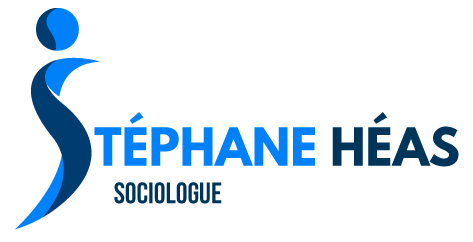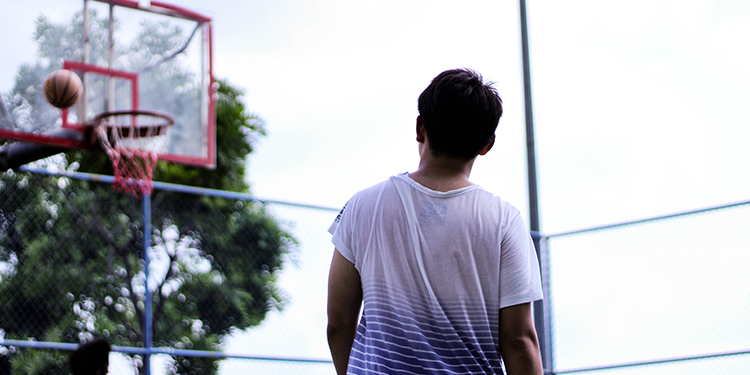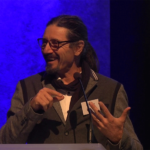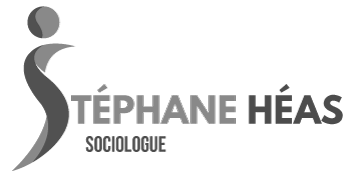survey conducted in 1997-1998
Summary
The survey invalidates the largely accepted statistical overrepresentation of left handers in sport students: only 13% are left-handed writers, and 9% left-handed throwers. Lateralities of eye, write hand and throw arm, support and take-off feet were assessed. Competition practice is a discriminating factor: competitive students use less frequently their left arm and more often their left foot. The non-right-handers students practice more interactive sports (with duel and confrontation) where the lateral advantage is implemented. Homogeneous lateralities clearly stand out. Now, the right-throwers are often right take-off foot and the left-throwers use nearly exclusively the same hand to write.
Key-words
Sociology. Lateralities. University of Sport. Competition
INTRODUCTION
In contemporary societies the non right-handed populations are in a minority: 10 to 15% of the population is left-handed for writing (Raymond et al., 1996), less than 11% is left-handed for throwing (Davis & Annett, 1994; Marchant et al., 1995). Only trans-cultural comparisons indicate few shifts to the relatively constant historical percentage of left-hand writers (Connolly & Bishop 1992; Gilbert & Wysocki, 1992).
Most of the time people who are lateralized differently from the right-handed norm are branded. This collective disparaging is largely confirmed in most occidental languages. It is précised by the symbolic values attached to lateralities through cultural times and spaces (Klingebiel, 1963; Azemar, 1970; Daily & Moscato, 1984; Berges & Du Pasquier, 1984). Left-Handed people (codified here as L.H.) are said to be clumsy, awkward whereas right-handed people appear as nimble and dexterous. Social representations of L.H. in modern society are enforced by depreciating connections. Comments about non standard populations often tend towards a more or less latent ostracism. Thus, in 1906, Fliess, a close relation of Freud, did not hesitate to attribute to L.H. close links to prostitution or criminal acts. In 1946 Blau ascribes to left-handedness the sign of child pathology (Coren, 1990). People who use their left limbs are often devalued; their situation is similar to minority groups.
Nowadays non right-handed people still seem quite badly off. Many scientific studies stress the epidemiological disadvantages of L.H.: they are shorter (Olivier , 1978), they sleep less soundly (Coren & Searleman, 1987) they often seem more addicted to substances such as alcohol or tobacco (Chyatte & Smith, 1981; Harburg, 1981), they are more often insulin-dependent (Smith, 1987), etc. L.H. have a shorter life expectancy of about 9 years (Coren & Halpern, 1991; Aggleton & al, 1993). As for public health, the L.H. life entails higher risks most of the time.
Some of these results, such as the shorter life expectancy of L.H. are criticized (Wood, 1988; Rothman, 1991; Harris, 1993). Moreover extraordinary abilities are acknowledged to a minority of the lateralized minorities. Michel Angelo or Pablo Picasso are ritually presented as the archetypes of left-handedness, even of ambidextrousness[1]. The university training courses providing specific connections to space or time seem to be profitable to lateralized minorities. For instance, the Architecture or Music Programmes gather more L.H. (Peterson & Lansky, 1974). The superiority of non right-handers in instrumental techniques is stressed (Byrne, 1974). The over-representation of L.H. inside students populations in Sporting and Physical Science and Techniques (S.P.S.T.) seem attested too (Coren, 1989, 1993; Raymond et al., 1996). Now, a trained awareness of one’s body in space or a specific relation to time, that of the timed result or even the record, are substantial elements in the S. P.S. T. training.
The global objective of this research is to understand
better the representation of different lateralities as part of a training
structure, the S.P.S.T. university, which, we postulate ex ante, favorable to
minority lateralities. Thus the problematic of this research is in the line of
Byrne’s. Here lateralities are considered in a neutral and even positive
manner, within the S. P.S. T. specific structure. Our goal is to precise the
relations between teachers and students’ lateralities and to know better their
influence on the transmission of knowledge.How important are individuals who do not fit in the
right-handed norm today in a background of corporal and sportive training? What
factors can explain the presence of non right-handed students? We will test here
the hypothesis of the adaptative advantage of lefthanders in two-players or
team interactive sports on a higher sample (Raymond & al., 1996).
METHODS AND MATERIAL
In order to answer these questions and test the hypothesis, we tackled the university of S.P.S.T. students’ lateralities thanks to a questionnaire given in November 1997. Anonymity was strictly controlled. Each questionnaire was given a number, students were asked to note it so that they could answer more thoroughly the research theme in the following months if needed. This survey aimed first at establishing the statistical distribution of the students’ different lateralities: writing hand, throwing hand, take off foot, dominant foot and dominant eye. A verbal instruction was given to determine the dominant foot: « the one which does not shoot ». A quick procedure was proposed to determine the dominant eye: « aim at a point on the wall, stretch an arm and raise a finger; close alternately one eye after the other, note down the one which is in the finger-target axis. If no sighting is in the axis, you indicate both eyes indifferently ». Therefore the survey relies exclusively on the students declarations. Apart from the eye procedure, the answers analysed here do not derive from tests. The collected information cannot be exactly compared with those obtained after classical determination tests: writing, ball throwing, drawing, using scissors or from actions such as threading a needle or brushing one’s teeth (Lansky & al., 1988; Peterson, 1990).
Besides the answers « right » and « left » the students could answer « any of them » or « rather the right one » or « rather the left one ». Being able to indicate uncertain (vague) or ambiguous lateralities has seemed important to us even for adults. They are liable to allow us to know better the proportion of candidates having been the object of not efficient pressures and/or individuals still engaged in a process of laterality construction. The sociological approach of our survey has lead us to precise professional and familial data at the end of the questionnaire: the occupation, the arm and foot lateralities, the physical and sporting activities, the hometown and the department of both parents. The student had to indicate his/her birth date, sex and marital status, as well as the foot and arm laterality of husband or wife if existing.
For the University year 1997-1998, 1,407 students (for 75 teachers tenured or not) are enrolled in Rennes S.P.S.T. university in the four first levels. Postgraduate students were not surveyed (N = 30). St Brieuc university unit, composed of 178 first year students and 96 second year students, is answering the questionnaire at the moment. 814 students have already answered on Rennes’ Campus: they constitute the quantitative basis of the data of this research. The second part of the survey will be based on semi-directive interviews concerning the minority subgroup about their lateralities: homogeneous lefthanders, cross-right-left-handers, non-determined (indecisive), ambidextrous person. Therefore the quantitative data presented constitute only an element of our comprehensive study.
The questionnaires were filled in during lectures in a lecture hall. 814 students were surveyed at the end of 1997: 498 male students and 312 female students. Moreover 4 questionnaires do not mention the sex of the student. All the persons polled are students in Rennes’ S.P.S.T. University. Nearly half of them (49.1%) is under 21 years, 38.8% are between 21 and 24, and 10.9% are over 24.
The polled people are representative of the global
university students. Students are under-represented: during the testing a few
of them have boycotted the survey. The referent population is composed of 64.2%
of males against 61.5% in our sample[2]. On the other hand the distribution of academic
standard of the sample is very close to the general population. In first year respectively
32.2% against 32.1%, in second year 24.3% against 23.5%, in third year 25.7%
against 24.5%, and in fourth year 17.8 % against 19.8%. Only the fourth year
students are slightly under-represented. About half of them study to take the
competitive examination to become P.E teacher (E.P.S.) within both the S.P.S.T.
and the Teacher Training Centre for France. The sample is still globally
representative of the Rennes S.P.S.T. which is one of the largest French
sporting training department number wise.The data analysis is performed using SPHINX 2
software. It allows to indicate frequencies, cross variances, and test the
independence thanks to the Chi2 or operate Analysis in Main Components. The
questions re-coding is sometimes problematic, which limits the possibility of
adapting the data. For instance, it is impossible for us to isolate the
elementary formulas of lateralities (eye, hand, foot) from the questionnaire as
done on the referent survey (Azemar, 1970).
RESULTS
Lefthanders and other minority lateralities in S.P.S.T.
24.2% of the students declare a dominant left eye, 13.9% indifferently any eye. 12.7% of the students polled at the end of 1997 use their left hand for writing. This proportion is not modified if we take into account the students answers « rather left-handed » or ambidextrous » (+0.2% each). All in all 13.1% of the Rennes S.P.S.T. Students are not right-hand writers.
The proportion of left-hand throwers is lesser: 9.0%. Ambidextrous students are in a large minority in our sample: two students state they use indifferently any hand for throwing, that is 1.6% of the sample. But, 84.7% of the S.P.S.T. students left-throwers use this hand for writing.
Foot lateralities are more divided. 60.4% have a left or rather left dominant foot. 48.6% have a left dominant foot, 3.8% rather left. 8.6% use indifferently either foot to high jump for example. The dependence between the throwing hand, the writing hand , and the take off foot is very significant (chi2 = 240.25, ddl = 8, 1-p = 99.99%).
Table I.
S.P.S.T. students lateralities in Rennes, 11/1997.
| Lateralities N (% in line) | Right | Left | Both | Rather Right | Rather Left | TOTAL number (%) |
| Dominant eye | 494 (61,8) | 203 (25,4) | 102 (12,8) | – | – | 799 (100,0) |
| Handwriting | 698 (86,2) | 103 (12,7) | 2 (0,2) | 5 (0,6) | 2 (0,2) | 810 (100,0) |
| Throwing | 694 (85,9) | 73 (9,0) | 13 (1,6) | 28 (3,5) | 0 (0) | 808 (100,0) |
| Take-off foot | 274 (33,8) | 39 (48,6) | 70 (8,6) | 41 (5,1) | 31 (3,8) | 810 (100,0) |
| Dominant foot | 204 (25,5) | 452 (56,5) | 93 (11,6) | 21 (2,6) | 30 (3,8) | 800 (100,0) |
The sample shows a particularity concerning the stated lateralities: fourth year students state less often they are left-handed. 6.2 % of fourth year students say they are left-handed against an average of 14.7 % for students in the other levels (namely 18.7 % in second year).
Lefthanders and competition.
684 students, that is 84% of the sample state that they compete in at least one sporting activity. The average registration cards by sporting student is 1.36. The sports are varied: 76 different sports are indicated. Football comes first (quoted 142 times), before tennis (96), athletics (95), volley-ball (91), basket ball (69) and handball (62). Swimming (39) and above all sailing seem to be typical of the privileged relation existing between the area and the sea[3]. Competition appears to be important in the students trajectory: 43.4% of the competitors enjoy more than 10 years of experience in competition, 11 % more than 15 years.
There is no significant difference according to the left scriptural lateralities of competitors or non competitors (12.9% against 13.3%). But, 8.7 % of competitors students are left-hand throwers against 11.6% of non- competitors. 54.2% of competitors prefer using their left take off foot against only 43.4% of non competitors students. Foot ambidextrousness seems to be less important for competitors (8.2% against 10.8%).
We have taken up the distinction established between
interactive and other sports (Raymond et al., 1996). On the one hand duel sports
(tennis, table tennis, badminton, etc.) and fighting sports (football,
handball, basket-ball, volley-ball etc) where lateralities entail potential
advantages. On the other hand sporting practices where the lateral advantage is
more or less nonexistent: swimming, gymnastics, athletics, cycling, etc.
Students competitors in the first type of activity (duel or fighting) are in a
majority: 54.65 %, whereas four students out of five (40.25%) exclusively practice
« non advantaging sports » concerning lateralities. Only a minority of
students combine these practices (5.1 %). The participation of non-right-handed
individuals in virtually advantageous sporting practices is important. On the
one hand, 13.2% of competitors in duel and fighting sports are left-handed against
7.1% for non interactive sports. On the other hand 71.6% of left-handed
competitors practice these potentially favorable sports against 51.7 % of right-handers.
Table II.
Table II.
S.P.S.T. students throwing lateralities in Rennes, France
| Handwriting \ Type of Sport N (% in column) (% in line) | Duel and fight exclusively | All sports | Without duel or fighting | Total |
| Right | 303 (83,2) (51,7) | 34 (100) (5,8) | 249 (92,9) (42,5) | 586 (88,0) (100,0) |
| Left | 48 (13,2) (71,65) | 0 (0) (0) | 19 (7,1) (28,35) | 67 (10,1) (100,0) |
| Both | 13 (3,6) (100) | 0 (0) (0) | 0 (0) (0) | 13 (1,9) (100,0) |
| Total | 364 (100) (54,65) | 34 (100) (5,1) | 268 (100) (40,25) | 666 (100) (100) |
DISCUSSION
The survey reveals an average number of non right-handed students in S.T.A.P.S (13.1 % for writing, 10.6 % for throwing). Students stating they were L.H. make up respectively 12.9 % and 9% of the sample. The proportion of lefthanders or ambidexters observed in Rennes differs noticeably from recent results obtained in Lyons I, A.P.S., U.F.R. On a more than twice less important sample (N=350) 15.7% L.H. for writing were listed; the proportion of left-hand throwers was not mentioned (Raymond et al., 1996).
We could use as a referent a survey carried out at the end of the 1960s on a population of P.E. students (Azemar, 1970). It registered 6 % of left-hand throwers which is a particularly low rate compared to the classical set of data (most of the time from 4 to 12 %). The results of larger British surveys concerning tens of thousands of people indicate from 7.1 % to 10.3% of left-hand throwers on average according to sex and age (Gilbert & Wyssocki, 1992; Davis & Annett, 1994). Students lateralities in A.P.S. do not seem to be different from distributions registered in more general populations. The results collected in Rennes seem to invalidate data stating a more important number of individuals outside the lateral norm in the future physical education coaches or teachers. It would be interesting to compare these results with other S.P.S.T. populations to determine if the proportions collected in Lyons are really typical.
Eye lateralities determined with a quick procedure correspond to the referent data: 61.8% of students possess a right dominant eye and 25.4% a left dominant eye. The reference survey indicates respectively 69.6% and 30.4% after the taking of two tests (Azemar, 1970). We have not implemented such a control this is why 12.8% of our students polled cannot identify precisely their dominant eye.
A global and unqualified judgment would block the situation of differently lateralized populations today. The liberalism prevailing in the past twenty years as to the choice of the hand used for writing has not modified the proportion of lefthanders in the population according to some authors (Chambon, 1997). However the differences observed by comparing statistical data in time and by the study of different lateralities reveal the subtle effects of a larger social and professional tolerance towards differently lateralized populations, namely concerning the important socio-cultural related actions such as writing, but also for sporting movements. Thus the situation of lefthanders in S.P.S.T. has drastically changed over the last thirty years: L.H. throwers are more numerous (from 6 to 9%, + 50%) and above all they are most of the time left-hand writers contrary to the observations of the referent survey. Today, 86% of the S.P.S.T. who are left throwers use this very hand to write. In the early 1970 a reverse proportion was observed: 84.6% are right-hand writers (Azemar, 1970). The current left-handedness seems to be more homogeneous. This change is very important, in itself it indicates an exemplary modification of the French society relation to lateralities different from the right-handedness norm whether it concerns a highly symbolic activity such as writing, or sportive acts such as throwing.
Despite an average representation of left-handed students in U.F.R. A.P.S. the competitive factor seems very important.
Five students out of six practice one or several competition sports. The average number of registrations per competitive student listed in Rennes (1.36) corresponds to the available data. The French estimate is between 1.4 and 1.5 for each person (Surault, 1989). The registrations cards declared by the federations cover various situations: executives, coaches but also sportsmen do not invest the same energy in their practice (Thomas, 1993). The hierarchy between French federations in terms of membership exists in our sample: football is predominant, then tennis. But athletics, volley ball and hand ball are overrepresented. Data concerning competitive practices are not easy to analyze. Only the confrontations of the answers to the questionnaire will be liable to sharpen the analysis.
The theory of lefthanders adaptative advantage in some sports such as fighting duels or interactive (Raymond et al., 1996 ) is confirmed by hand lateralities.
A minority of students (5.1%) compete at the same time in interactive and non interactive sports. This assessment reveals the cleavage between the different conceptions of A.P.S.: on the one hand the interactive sporting duel or collective, and on the other the confrontation to oneself or to the elements (water, air or ground). Furthermore the presence of non right-handers in virtually profitable sporting activities is important: 71.6% of lefthanders practice these potentially profitable sports against 51.7% of right-handers. This distribution confirms the hypothesis of the lateral advantage in some sports observed precisely in the Lyon sample where respectively 72% of lefthanders practiced interactive sports against 62 % of righthanders [4].
Besides the L.H. throwers competitors are only 8.6% (0.4% less than the average). So there are less L.H. throwers in competition. This statistical indication tends to underline indirectly, the thesis of the superior advantage of lefthanders in some specific sports. The advantage of using one arm rather than the other, for example to throw the javelin does not exist. The calculations of relative speed of movements of arms or legs and the response lapse « have not shown any significant difference between the two sides »[5]
Feet lateralities throw another light on the subject.
Effectively competitive students seem to use their left take off foot more
frequently. These data confirm the phenomenon of « crossed
lateralities » analysed in the sporting major elite (Guillodo, 1990;
Guillodo et al., 1993) and underlined
in the referent study (Azemar, 1970). This one precises the different types of
feet lateralities, especially when distinguishing the shot and the impulse for
high-jump: « they significantly symbolize in our statistic the functional specialization
respectively attributed to inferior left and right limb (right foot shot: 92%,
left foot high-jump: 79%) ». We have not taken up exactly the same criteria,
our data indicate: 59.2% left dominant foot and rather left (so right foot shot[6] and 52.4% left take off foot and rather left. Our
sample of students state they prefer using less often their right foot to shoot
than the students polled in the sixties. These differences lead up to two
comments; either we cannot consider a comparison on this point since the
questions were not exactly similar, either lateral factors have effectively
evolved a lot in the last thirty years. If it is true, homogeneous lateral
preferences seem to progress equally for the polled right-handers who, most of
the time, practice a sport outside the high level competition.
CONCLUSION
All in all the data collected from the Rennes S.P.S.T. students reveal a progression of homogeneous lateralities both in the right-handed majority and in the lefthanders still in a minority. The analysis of questions related to the pressures exerted on hands and feet, and the crossing of data considering the sex of the polled person are liable to bring some precisions on these phenomenon (Héas, 1998).
The referent preliminary studies carried out at the end of the sixties consisted in observing future physical education teachers » fully aware of the distribution of their segmentary prevalences » (Azemar, 1970: 65). The current situation does not perfectly fit with the situation described in 1970. Effectively, in the past few years, the opening and the conformity of S.P.S.T. departments on the pattern of other Training and research departments has greatly widened the recruiting of students. Today the first and second year students most certainly grasp their corporal and sporting activities in a different way. Their own relation to their body must be different. The consequences of this university outlook as to problematic will be analysed during rounds of interviews making up the second part of our field research. Some data, which were recorded in Rennes, such as the average number of L.H. students are liable to be partially explained by the recent changes affecting the students in S.P.S.T.
REFERENCES
Aggleton, J.P., Kentrige, R.W. & Neave, N.J. (1993) Evidence for longevity differences between left handed and right handed men: an archival study of cricketers, J. Epidemiol. Comm. Health, 47: 206-209. Azemar, G. (1970). Sport et latéralité; les asymétries fonctionnelles. Paris, Ed. Universitaire. Byrne, P. (1974). Handedness and musical ability. British Journal of Psychology, 1974, 65, 279-281. Chambon, Ph. (1997). La botte secrète des gauchers. Science et Vie, 958:116-120. Chyatte, C. & Smith, V. (1981). Brain asymmetry predicts suicide among naval alcohol abusers. Military Medicine, 146, 227-235. Connolly, K.J. & Bishop, D.V.M. (1992). The measurement of handedness: a cross-cultural comparison of samples from england and papua new guinea. Neuropsychology, 30: 13-26. Coren, S. & Searleman, A. (1987). Left sidedness and sleep difficulty: The alinormal syndrome. Brain and Cognition, 6, 184-192; Coren, S. (1989). Left-handedness and accident-related injury risk. American Journal of Public Health, 79, 1-2; Coren, S. (1990). Left-handedness; behavioral implications and anomalies. Vancouver, North Holand; Coren, S. & Halpern D.F. (1991). Left handedness: a marker for decreased survival fitness. Psychol. Bull., 109: 90-106; Coren, S. (1993). The left-hander syndrome: the causes and consequences of left- handedness, Free Press. Dailly, R., Moscato M. (1984). Latéralisation et latéralité chez l’enfant. Bruxelles, Mardaga. Davis, A. & Annett, M. (1994). Handedness as a function of twinning, age and sex. Cortex, 30: 105-111. Du Pasquier, M.-A. & Berges, J. (1984). Conditions psychosociales de la latéralisation: le choix de la main pour écrire In: R Dailly et M Moscato. Latéralisation et latéralité chez l’enfant. Bruxelles, Mardaga: 199-210. Gilbert, A.N. & Wysocky C.J. (1992). Hand preference and age in the united states. Neuropsychol., 30: 601-608. Guillodo, Y. (1990). Le footballeur gaucher ( latéralité podale chez le footballeur professionnel ). Cinésiologie, XXIX: 347-350; Guillodo, Y. & Sebert, P. & Barthelemy, L. (1993). Particularités neurophysiologiques du footballeur gaucher de haut niveau. Cinésiologie, XXXII: 89-92. Harburg, E. (1981). Handedness and drinking-smoking types. Perceptual and Motor Skills, 47, 1171-1174. Harris, L.J. (1993). Do left handers die sooner than right-handers ? Commentary on Coren and Halpern’s (1991) » Left handedness: a marker for decreased survival fitness « , Psychol. Bull., 114: 203-234. Héas, S. (1998). Lateralities and sexual differences in university of sport, British Journal of Social Psychology (in expertise). Klingebiel, P. (1963). L’écolier gaucher; de l’école maternelle aux grandes écoles. Paris, E.S.F.. Lansky, L.M., Feinstein, H. & Peterson, J.M. (1988). Demography of handedness in two samples of randomly selected adults (N=2083). Neuropsychologia, 26, 465-477. Marchant, L.F., McGrew, W.C. & Eibl-Eibesfeldt, I. (1995). Is human handedness universal ? Ethological analyses from three traditional cultures. Ethology, 101, 239-258. Olivier, G. (1978). Anthropometric data of left-handed. Biométrie Humaine, 13, 13-22. Peterson, J.M. & Lansky, L.M. (1974). Left-handedness among architects: some facts and speculation. Perceptual and Motor Skills, 1974, 38, 547-550. Peterson, J.M. (1990). Some contents on Götestam’s (1990) » Lefthandedness among astudents of architecture and music « . Perceptual and Motor Skills, 1990, 70, 1345-1346. Raymond, M., Pontier, D., Dufour, A.-B. & Moller, A.P. (1996). Frequency-dependent amaintenance of left handedness in humans. Proc. R. Soc., 263:1627-1633. Rothman, K.J. (1991). Left handedness and life expectancy. New Engl. J. Med., 325: 1041. Smith, J. (1987). Left-handedness: Its association with allergic disease. Neuropsychologia, 25, 665-674. Surault, P. (1989). Essai de démographie sportive In: Andreff. Economie politique du sport, Paris, Dalloz. Thomas, R. (1993). Sociologie du sport. Paris, P.U.F.-que sais-je?. Wood, E.K. (1988). Less sinister statistics from baseball records. Nature, Lond. 335: 212.
[1] This creativity, sometimes acknowledged to « bad » lateralized populations has been more recently given a pounding: it is qualified as « popular creed rather than scientific reality » (Coren, 1993).
[2] Moreover the eccentric answers come only from male students (less than five questionnaires
[3] Moreover some branches, for instance the Sport management post-degree recruit in sailing professional circles: National Sailing School of Quiberon.
[4] These figures have been calculated from Raymond & coll.1996 tables. The lefthanded sample is small: 55 students only against more than a hundred in the present study.
[5] Works of W.S. LOTTER quoted by (G.) AZEMAR, ibidem 1970:127. This author regrets that Lotter « has not classified subjects according to their laterality ».
[6] When the polled students asked us how to determine their dominant foot , we answered « the one you do not shoot with ».









Comments
Eliza
Make your money work for you! click here to explore a range of investment opportunities that can help you build wealth over time.
Davy Samuel
Your blog post was a gem! The information you provided was well-researched, and your explanations were easy to follow. For those interested in learning more, […] Read MoreYour blog post was a gem! The information you provided was well-researched, and your explanations were easy to follow. For those interested in learning more, click here. Keep up the excellent work! Read Less